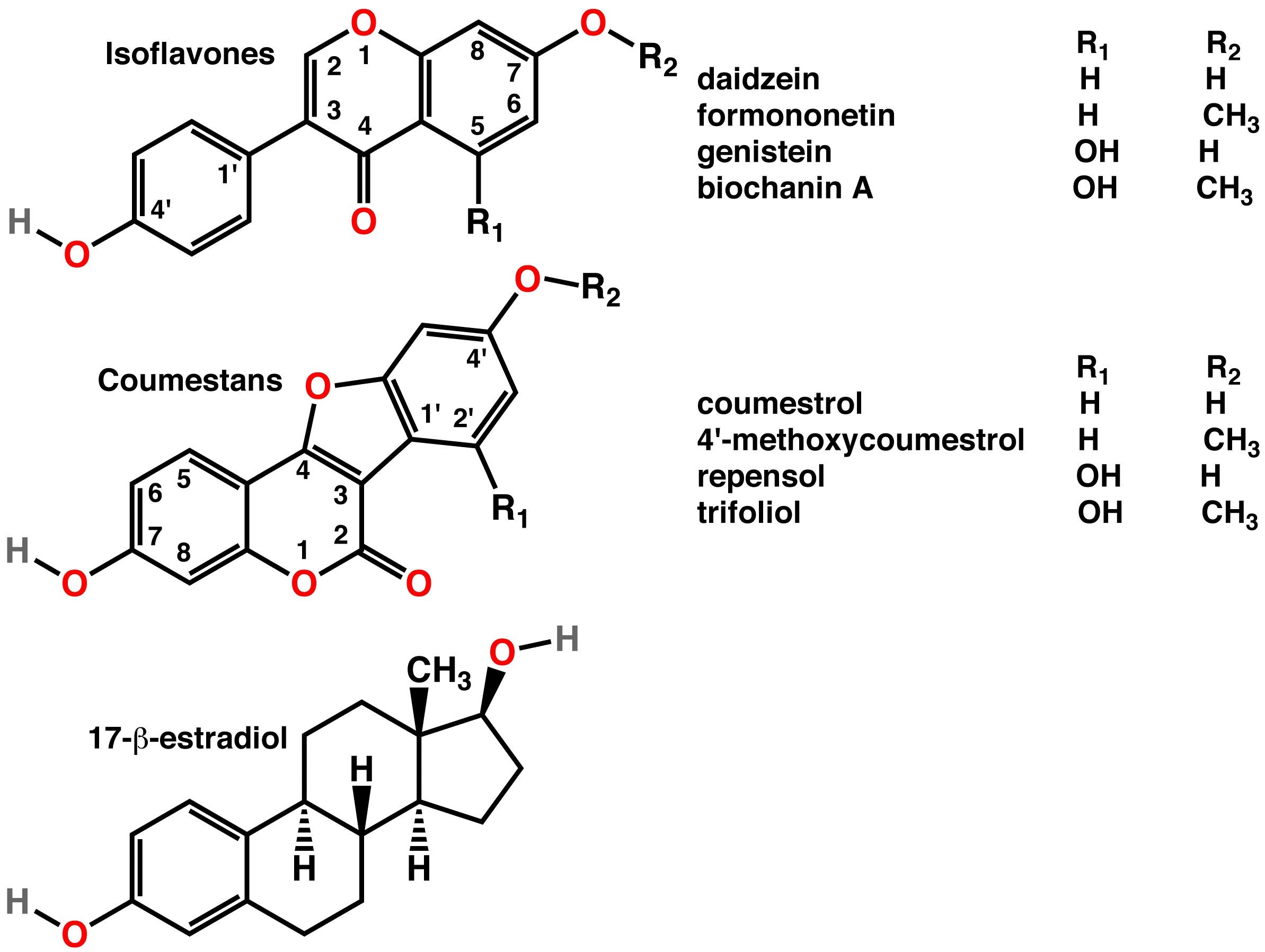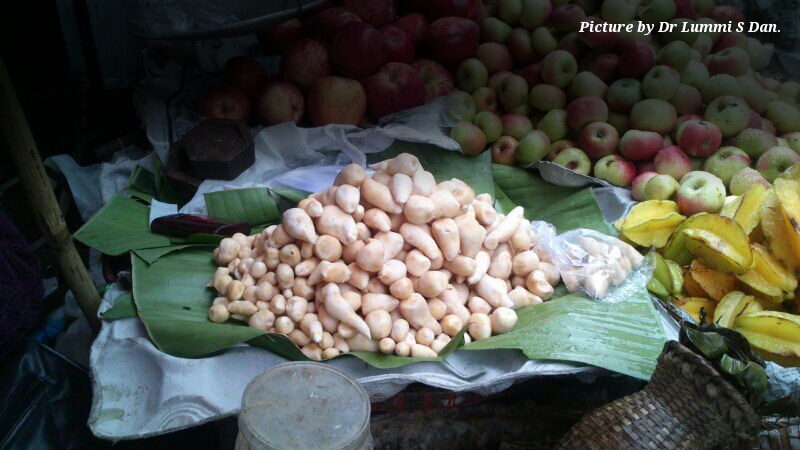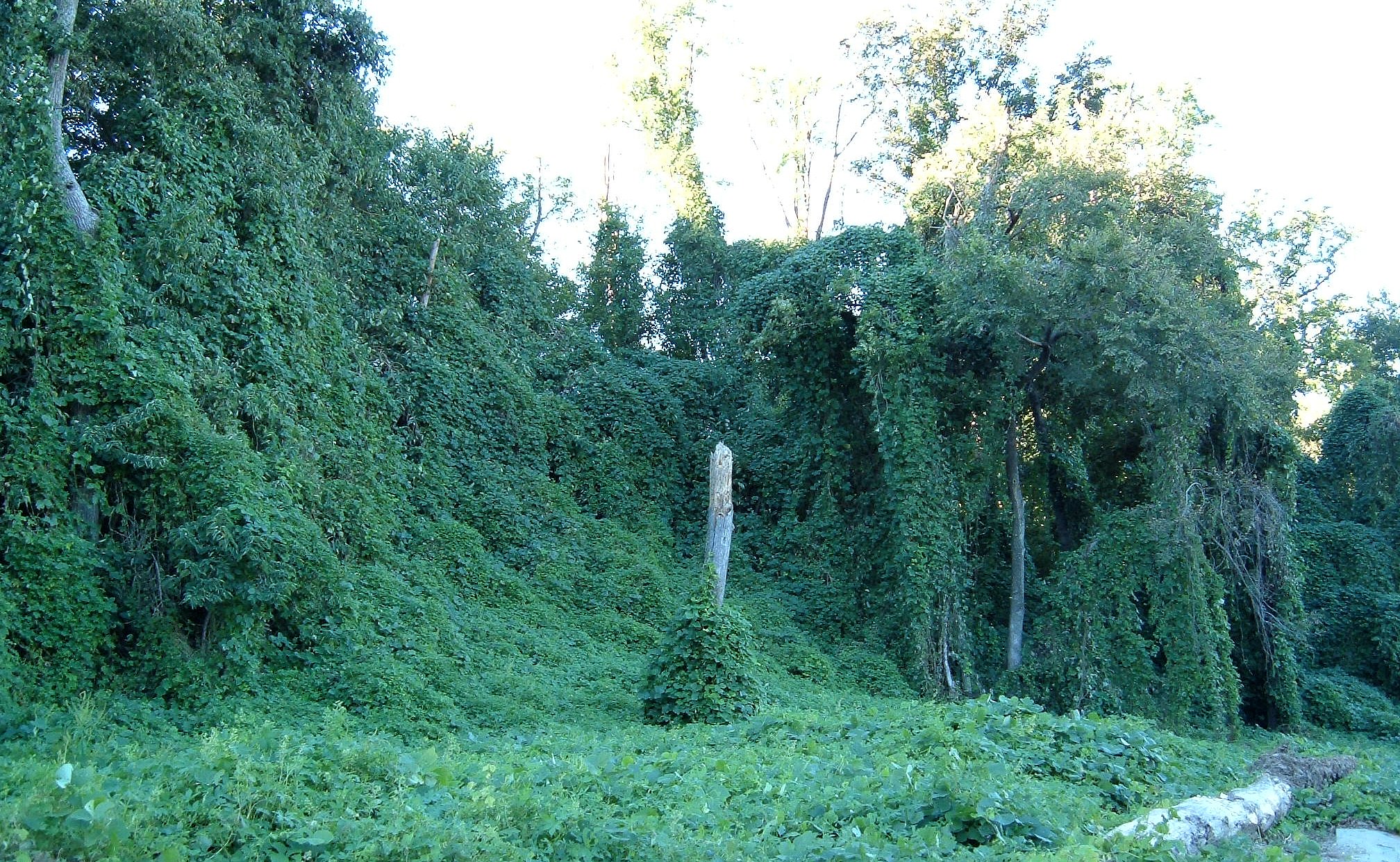|
Genistein
Genistein (C15H10O5) is a naturally occurring compound that structurally belongs to a class of compounds known as isoflavones. It is described as an angiogenesis inhibitor and a phytoestrogen. It was first isolated in 1899 from the dyer's broom, ''Genista tinctoria''; hence, the chemical name. The compound structure was established in 1926, when it was found to be identical with that of prunetol. It was chemically synthesized in 1928. It has been shown to be the primary secondary metabolite of the ''Trifolium'' species and ''Glycine max L''. Natural occurrences Isoflavones such as genistein and daidzein are found in a number of plants including lupin, fava beans, soybeans, kudzu, and psoralea being the primary food source, also in the medicinal plants, '' Flemingia vestita'' and '' F. macrophylla'', and coffee. It can also be found in ''Maackia amurensis'' cell cultures. Biological effects Besides functioning as an antioxidant and anthelmintic, many isoflavones have been sh ... [...More Info...] [...Related Items...] OR: [Wikipedia] [Google] [Baidu] |
Phytoestrogen
A phytoestrogen is a plant-derived xenoestrogen (see estrogen) not generated within the endocrine system, but consumed by eating plants or manufactured foods. Also called a "dietary estrogen", it is a diverse group of naturally occurring nonsteroidal plant compounds that, because of its structural similarity with estradiol (17-β-estradiol), have the ability to cause estrogenic or antiestrogenic effects. Phytoestrogens are not essential nutrients because their absence from the diet does not cause a disease, nor are they known to participate in any normal biological function. Common foods containing phytoestrogens are soy protein, beans, oats, barley, rice, coffee, apples, carrots (see Food Sources section below for bigger list). Its name comes from the Greek ''phyto'' ("plant") and ''estrogen'', the hormone which gives fertility to female mammals. The word "estrus" - Greek οίστρος - means "sexual desire", and "gene" - Greek γόνο - is "to generate". It has been hypothe ... [...More Info...] [...Related Items...] OR: [Wikipedia] [Google] [Baidu] |
Isoflavones
Isoflavones are substituted derivatives of isoflavone, a type of naturally occurring isoflavonoids, many of which act as phytoestrogens in mammals. Isoflavones are produced almost exclusively by the members of the bean family, Fabaceae (Leguminosae). Although isoflavones and closely related phytoestrogens are sold as dietary supplements, there is little scientific evidence for either the safety of long-term supplementation or of health benefits from these compounds. Some studies have identified potential risks from high intake of isoflavones, such as in women with a history of breast cancer, but this concern has not been substantiated with high-quality clinical research. Organic chemistry and biosynthesis Isoflavone is an isomer of flavone, which is chromone substituted with a phenyl group in the 2-position. In isoflavone, the phenyl group is in the 4-position. Isoflavone is of liminted interest per se, but substituted derivatives are of nutritional interest. Substituted derivativ ... [...More Info...] [...Related Items...] OR: [Wikipedia] [Google] [Baidu] |
Isoflavone
Isoflavones are substituted derivatives of isoflavone, a type of naturally occurring isoflavonoids, many of which act as phytoestrogens in mammals. Isoflavones are produced almost exclusively by the members of the bean family, Fabaceae (Leguminosae). Although isoflavones and closely related phytoestrogens are sold as dietary supplements, there is little scientific evidence for either the safety of long-term supplementation or of health benefits from these compounds. Some studies have identified potential risks from high intake of isoflavones, such as in women with a history of breast cancer, but this concern has not been substantiated with high-quality clinical research. Organic chemistry and biosynthesis Isoflavone is an isomer of flavone, which is chromone substituted with a phenyl group in the 2-position. In isoflavone, the phenyl group is in the 4-position. Isoflavone is of liminted interest per se, but substituted derivatives are of nutritional interest. Substituted deriv ... [...More Info...] [...Related Items...] OR: [Wikipedia] [Google] [Baidu] |
Isoflavone
Isoflavones are substituted derivatives of isoflavone, a type of naturally occurring isoflavonoids, many of which act as phytoestrogens in mammals. Isoflavones are produced almost exclusively by the members of the bean family, Fabaceae (Leguminosae). Although isoflavones and closely related phytoestrogens are sold as dietary supplements, there is little scientific evidence for either the safety of long-term supplementation or of health benefits from these compounds. Some studies have identified potential risks from high intake of isoflavones, such as in women with a history of breast cancer, but this concern has not been substantiated with high-quality clinical research. Organic chemistry and biosynthesis Isoflavone is an isomer of flavone, which is chromone substituted with a phenyl group in the 2-position. In isoflavone, the phenyl group is in the 4-position. Isoflavone is of liminted interest per se, but substituted derivatives are of nutritional interest. Substituted deriv ... [...More Info...] [...Related Items...] OR: [Wikipedia] [Google] [Baidu] |
Flemingia Vestita
''Flemingia vestita'' (synonyms ''Flemingia procumbens'' Roxb.; ''Moghania vestita'' (Benth.) ex Baker Kuntze; ''Moghania procumbens'' (Roxb.) Mukerjee) famously known as ''Sohphlang'' is a nitrogen fixing herb with characteristic tuberous root, belonging to the genus '' Flemingia''. The root is edible and is a common vegetable in some Asian tribal communities. In addition, it has been traditionally used as an anthelmintic, the basis of which is scientifically validated. It is found as a wild herb along the mountain slopes of Himalayas. It is distributed in Sichuan and Yunnan provinces of China, Nepal and Khasi hills , Jaintia Hills of Meghalaya in Northeast India. It is also sparsely found in Laos, Philippines and Vietnam. Description ''F. vestita'' is a perennial herb, having a prostrate but weak stem, measuring about ~60 cm in average. It is highly branched with hairy rhizome and hirsute stems. The roots are tuberous (6 cm or longer). Leaves are pinnately c ... [...More Info...] [...Related Items...] OR: [Wikipedia] [Google] [Baidu] |
Daidzein
Daidzein (7-hydroxy-3-(4-hydroxyphenyl)-4H-chromen-4-one) is a naturally occurring compound found exclusively in soybeans and other legumes and structurally belongs to a class of compounds known as isoflavones. Daidzein and other isoflavones are produced in plants through the phenylpropanoid pathway of secondary metabolism and are used as signal carriers, and defense responses to pathogenic attacks. In humans, recent research has shown the viability of using daidzein in medicine for menopausal relief, osteoporosis, blood cholesterol, and lowering the risk of some hormone-related cancers, and heart disease. Despite the known health benefits, the use of both puerarin and daidzein is limited by their poor bioavailability and low water solubility. Natural occurrence Daidzein and other isoflavone compounds, such as genistein, are present in a number of plants and herbs like kwao krua (''Pueraria mirifica'') and kudzu. It can also be found in ''Maackia amurensis'' cell cultures. Daid ... [...More Info...] [...Related Items...] OR: [Wikipedia] [Google] [Baidu] |
Estrogen Receptor
Estrogen receptors (ERs) are a group of proteins found inside cells. They are receptors that are activated by the hormone estrogen ( 17β-estradiol). Two classes of ER exist: nuclear estrogen receptors (ERα and ERβ), which are members of the nuclear receptor family of intracellular receptors, and membrane estrogen receptors (mERs) (GPER (GPR30), ER-X, and Gq-mER), which are mostly G protein-coupled receptors. This article refers to the former (ER). Once activated by estrogen, the ER is able to translocate into the nucleus and bind to DNA to regulate the activity of different genes (i.e. it is a DNA-binding transcription factor). However, it also has additional functions independent of DNA binding. As hormone receptors for sex steroids (steroid hormone receptors), ERs, androgen receptors (ARs), and progesterone receptors (PRs) are important in sexual maturation and gestation. Proteomics There are two different forms of the estrogen receptor, usually referred to as α a ... [...More Info...] [...Related Items...] OR: [Wikipedia] [Google] [Baidu] |
Angiogenesis Inhibitor
An angiogenesis inhibitor is a substance that inhibits the growth of new blood vessels (angiogenesis). Some angiogenesis inhibitors are endogenous and a normal part of the body's control and others are obtained exogenously through drugs, pharmaceutical drugs or diet (nutrition), diet. While angiogenesis is a critical part of wound healing and other favorable processes, certain types of angiogenesis are associated with the growth of malignant tumors. Thus angiogenesis inhibitors have been closely studied for possible cancer treatment. Angiogenesis inhibitors were once thought to have potential as a "silver bullet" treatment applicable to many types of cancer, but the limitations of anti-angiogenic therapy have been shown in practice. Nonetheless, inhibitors are used to effectively treat cancer, macular degeneration in the eye, and other diseases that involve a proliferation of blood vessels. Mechanism of action When a tumor stimulates the growth of new vessels, it is said to have ... [...More Info...] [...Related Items...] OR: [Wikipedia] [Google] [Baidu] |
Tyrosine Kinase
A tyrosine kinase is an enzyme that can transfer a phosphate group from ATP to the tyrosine residues of specific proteins inside a cell. It functions as an "on" or "off" switch in many cellular functions. Tyrosine kinases belong to a larger class of enzymes known as protein kinases which also attach phosphates to other amino acids such as serine and threonine. Phosphorylation of proteins by kinases is an important mechanism for communicating signals within a cell (signal transduction) and regulating cellular activity, such as cell division. Protein kinases can become mutated, stuck in the "on" position, and cause unregulated growth of the cell, which is a necessary step for the development of cancer. Therefore, kinase inhibitors, such as imatinib and osimertinib, are often effective cancer treatments. Most tyrosine kinases have an associated protein tyrosine phosphatase, which removes the phosphate group. Reaction Protein kinases are a group of enzymes that possess a catal ... [...More Info...] [...Related Items...] OR: [Wikipedia] [Google] [Baidu] |
Genista Tinctoria
''Genista tinctoria'', the dyer's greenweed or dyer's broom, is a species of flowering plant in the family Fabaceae. Its other common names include dyer's whin, waxen woad and waxen wood. The Latin specific epithet ''tinctoria'' means "used as a dye". Description It is a variable deciduous shrub growing to tall by wide, the stems woody, slightly hairy, and branched. The alternate, nearly sessile leaves are glabrous and lanceolate. Golden yellow pea-like flowers are borne in erect narrow racemes from spring to early summer. The fruit is a long, shiny pod shaped like a green bean pod. Distribution and habitat This species is native to meadows and pastures in Europe and Turkey. Properties and uses Numerous cultivars have been selected for garden use, of which 'Royal Gold' has gained the Royal Horticultural Society's Award of Garden Merit. The plant, as its Latin and common names suggest, has been used from ancient times for producing a yellow dye, which combined with woad als ... [...More Info...] [...Related Items...] OR: [Wikipedia] [Google] [Baidu] |
Kudzu
Kudzu (; also called Japanese arrowroot or Chinese arrowroot) is a group of climbing, coiling, and trailing deciduous perennial vines native to much of East Asia, Southeast Asia, and some Pacific islands, but invasive species, invasive in many parts of the world, primarily North America. The vine densely climbs over other plants and trees and grows so rapidly that it smothers and kills them by blocking most of the sunlight. The plants are in the genus ''Pueraria'', in the pea family Fabaceae, subfamily Faboideae. The name is derived from the Japanese language, Japanese name for the plant East Asian arrowroot, (''Pueraria montana'' var. ''lobata''), . Where these plants are Naturalisation (biology), naturalized, they can be invasive species, invasive and are considered noxious weeds. The plant is edible, but often sprayed with herbicides. Taxonomy and nomenclature The name kudzu describes one or more species in the genus ''Pueraria'' that are closely related, and some of them ... [...More Info...] [...Related Items...] OR: [Wikipedia] [Google] [Baidu] |
Flemingia Macrophylla
''Flemingia macrophylla'' a is woody leguminous shrub belonging to the genus '' Flemingia''. It is a multipurpose plant widely used in agriculture, crop improvement, fodder, dyes and for various therapeutic purposes. Perhaps, it is the most versatile species of ''Flemingia'' in terms of adaptation, medicinal and agricultural applications. It is a native plant of subhumid to humid (sub-) tropics where average annual rainfall is typically 1100–3500 mm with up to 6 dry months, at altitude up to 2000 m above msl. Thus its natural habitat is Asia including Bhutan, southern China, Cambodia, India, Indonesia, Laos, Myanmar, Malaysia, Nepal, northern Pakistan, Papua New Guinea, Philippines, Sri Lanka, Taiwan, Thailand and Vietnam. It has been cultivated and naturalised in Sub-Saharan Africa (such as Côte d'Ivoire, Ghana, Nigeria, Cameroon), Central and South America (e.g. Costa Rica, Panama, Colombia), and tropical Australia. It is known by several vernacular ... [...More Info...] [...Related Items...] OR: [Wikipedia] [Google] [Baidu] |





